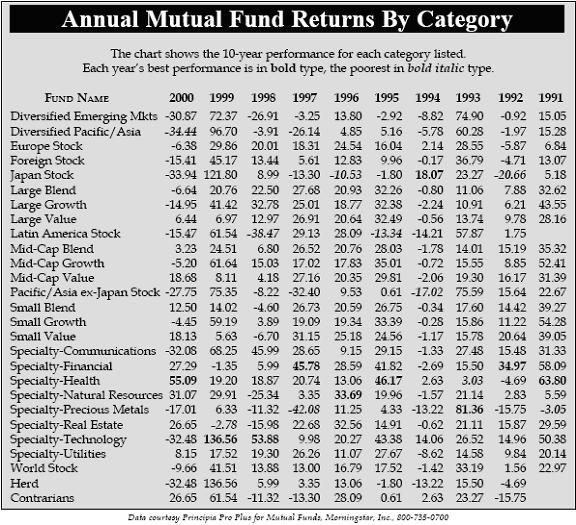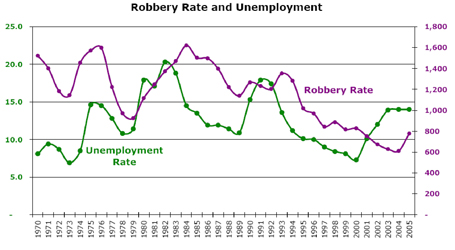Wealthy investors seeking an alternative to the performance and volatility of the public equity markets are turning to private equity investments. Portfolio diversification and hoped-for average annual returns approaching 20%, coupled with lower minimum investments, have led to the private equity stampede.
Private equity refers to any ownership stake in a non-publicly traded corporation. Among the most well known private companies today are Mars and Levi Strauss & Co.
Investors whose memories go back more than ten years will recognize a familiar name lurking behind the veil of private equity—leveraged buyouts (LBOs). In the 1980s a typical LBO would buy an undervalued company using money it obtained by issuing junk bonds. The target company then would be broken into pieces that could be sold off for more than the target was worth as a whole. This strategy, appropriately dubbed buy-and-bust, worked remarkably well until the junk bond market collapsed, thus ending the LBO craze by the beginning of the 1990s. Many of the target businesses went bankrupt when they were unable to service the high-interest junk bonds as the economy slowed after the October 1987 stock market crash.
LBO firms today use less debt, making their acquisitions less risky. They also use a more constructive buy-and-build strategy. This strategy, as the name implies, involves purchasing similar business units from diversified companies. Typically, an LBO firm will buy a core, or platform, company and will build on it through additional acquisitions, merging complementary businesses. In this way, the firm makes the combined entity a major player in its industry. In addition to the acquired companies’ increased sales, the LBO firm tries to improve profitability by reducing costs and increasing efficiencies. The result is a consolidated company that can be twice as large as the original platform investment, and potentially several times more valuable.
In 1993, for example, Hicks, Muse, Tate & Furst Inc., a large private equity firm, purchased DuPont’s connector systems unit for $330 million, using an equity contribution of $35 million and $295 million of borrowed money. Hicks, Muse changed the name of the platform company to Berg Electronics, Inc. Over the next five years, Berg Electronics went on to acquire eight more companies. In 1998, Hicks, Muse completed Berg Electronics’ public offering. Hicks, Muse investors received $479 million in total proceeds, an annual internal rate of return (IRR) of 70% (before fees) on the original $35 million investment.
While LBOs have been rebranded as private equity, in reality they are only a part of the private equity universe. The other major component is venture capital investing. Venture capital (VC) firms analyze, finance and strategically manage start-up companies. Typically, entrepreneurs will sell a major interest in their company to venture capitalists in exchange for much-needed cash and expertise unavailable elsewhere.
Entrepreneurs can be supported during several stages of their businesses’ development. For example, seed-stage investing helps an entrepreneur get his or her business off the ground. At this point, little more than an idea has been formulated. VC firms in this stage often provide financial backing as well as office space and administrative support. Several more financing rounds can occur before the pre-Initial Public Offering (IPO) round. During this round, the venture capitalist’s new investment tends to be greater than in previous rounds, while the ownership stake is smaller. The reason is simple—less risk. A company that has made it to the pre-IPO round of funding has a far better chance of succeeding than when it was a seed-stage company.
Most technology companies have venture capital in their history. Names like Intel, Cisco, Yahoo!, Netscape, and Oracle all received venture capital backing prior to going public. Unfortunately, not every VC investment becomes successful. A few that did not make it: Pets.com, Kozmo.com and E-Toys.
Less Risk, More Return
The allure of private equity investing is a direct result of the extraordinary returns achieved by these successful investments. According to Venture Economics, a private equity database compiler, private equity investments have yielded a 19.3% average annual return after fees and expenses for the 20-year period ended December 31, 2000. That compares to the S&P 500’s 15.7% average annual return and the Russell 2000 index of small companies 13.3% average annual return over the same period.
Private equity firms recognize that funding unsuccessful companies comes with the territory. Nonetheless, these investors continue because the potential gain outweighs the risk. As the performance statistics cited above demonstrate, these firms have substantially outperformed the public equity markets. Private equity firms usually hold a substantial interest in their portfolio companies, which often leads to board representation and sometimes management functions. This active investing provides greater opportunity to improve profitability, a potentially attractive alternative to passive investing in public companies. In addition to outstanding performance, several researchers have shown that private equity returns do not closely correlate with public equity market returns. Thus, adding private equity to a diversified portfolio can potentially reduce volatility while increasing expected returns.
At Palisades Hudson Asset Management, Inc., we suggest a maximum allocation to private equity of 5% of total investment assets or 10% of equity investments for most clients.
When taking the plunge into private equity there are a few things the potential investor should know about how private equity firms operate. Most private equity firms create limited partnerships to hold a series of private equity investments. LBO partnerships typically have 10 to 20 portfolio companies. A seed-stage investment venture capital fund will hold many more portfolio companies.
When an investor subscribes to a private equity partnership, he or she agrees to commit a specific amount over the life of the fund. The investor may only contribute 10% to the fund initially. Over the next three to four years, the private equity firm will generally draw down the rest of the money committed as it is needed. The investor agrees to meet these capital calls within a few days of the request for cash. The fund’s term usually lasts for ten years.
Because the investments held by a private equity fund are not publicly traded, fund managers must estimate the value of their holdings periodically in order to give investors some idea of how they are doing. The moment of truth, however, comes when each private company is sold, taken public, or fails. After these realizations, the fund’s true performance can be tallied. Most funds distribute their profits after each such realization event.
Of course, investing in private equity funds costs money. In a typical arrangement, the private equity firm will charge an annual fee of 1-2% of committed assets to manage the fund. The firm also also will take about 25% of the funds’ profits from successful endeavors. This means that an investment that earned 30% over a one-year span will distribute about 21% to the funds’ partners.
The minimum investment for many of these funds is $20 million. You do not need to be a centimillionaire to play the private equity game, however. Palisades Hudson clients typically invest through funds-of-funds whose minimums are much lower, in the $250,000 to $500,000 range.
A fund-of-funds does add an additional layer of fees to the already steep cut the private equity partnership takes. Fund-of-funds often charge a 1% annual management fee and take a 5% share of the private equity partnership’s distribution. If the 30% gross IRR example above took place through a fund-of-funds, that return would drop to approximately 19%, a significant drop from 30%, but still not too shabby.
A fund-of-funds may invest in several private equity partnerships or may invest directly in one partnership. Fund-of-funds investors need to decide if they want to invest in a pre-selected or a blind fund. In the former, the investor will know in advance which private equity manager or managers will actually make the investments. In the latter, the private equity fund-of-funds decides at a future date how to invest the money, so investors are relying on the fund-of-funds manager to select good LBO or VC firms
Proceed With Caution
Private equity investing should not be done carelessly. This asset class is riddled with traps and pitfalls for most investors. The difference between top-tier and bottom-tier private equity partnerships is substantial, much more than in mutual funds.
The caliber of the investment management team is crucial to the fund’s success. The top private equity firms have the best deal flow, meaning they evaluate the most promising investment opportunities, and have the knowledge and resources to capitalize on the right ones.
Small investors frequently do not participate in the top private equity partnerships. Some brokerage houses offer private equity vehicles, but these firms do not specialize in private equity and can have numerous conflicts of interest. The objectivity and expertise of a partnership’s management needs to be scrutinized.
Juggling all these factors and more is an arduous task. Private equity funds are illiquid, they command sizable fees, and rely heavily on the management skills of the operating partners. The possibility of outstanding returns, however,







